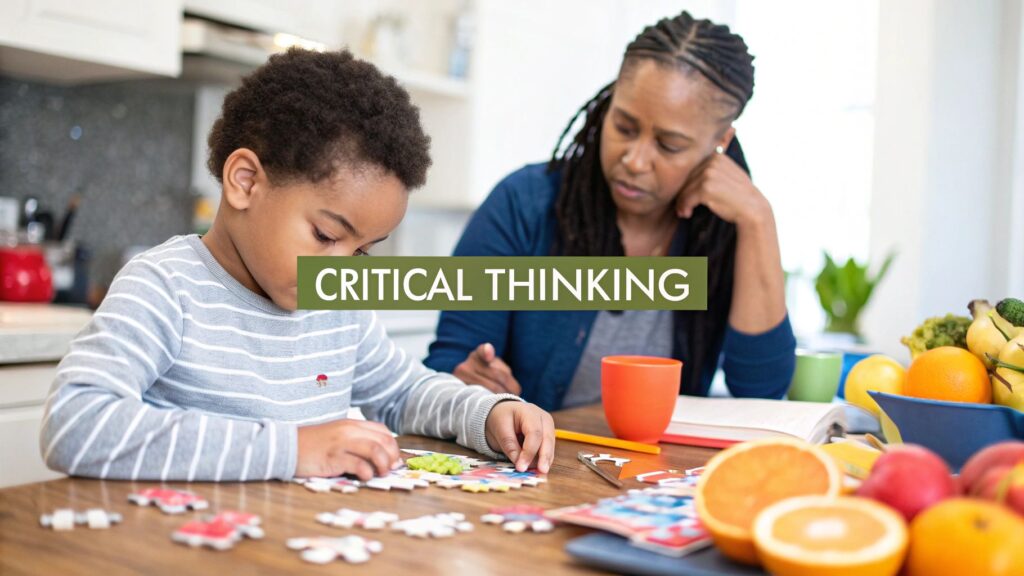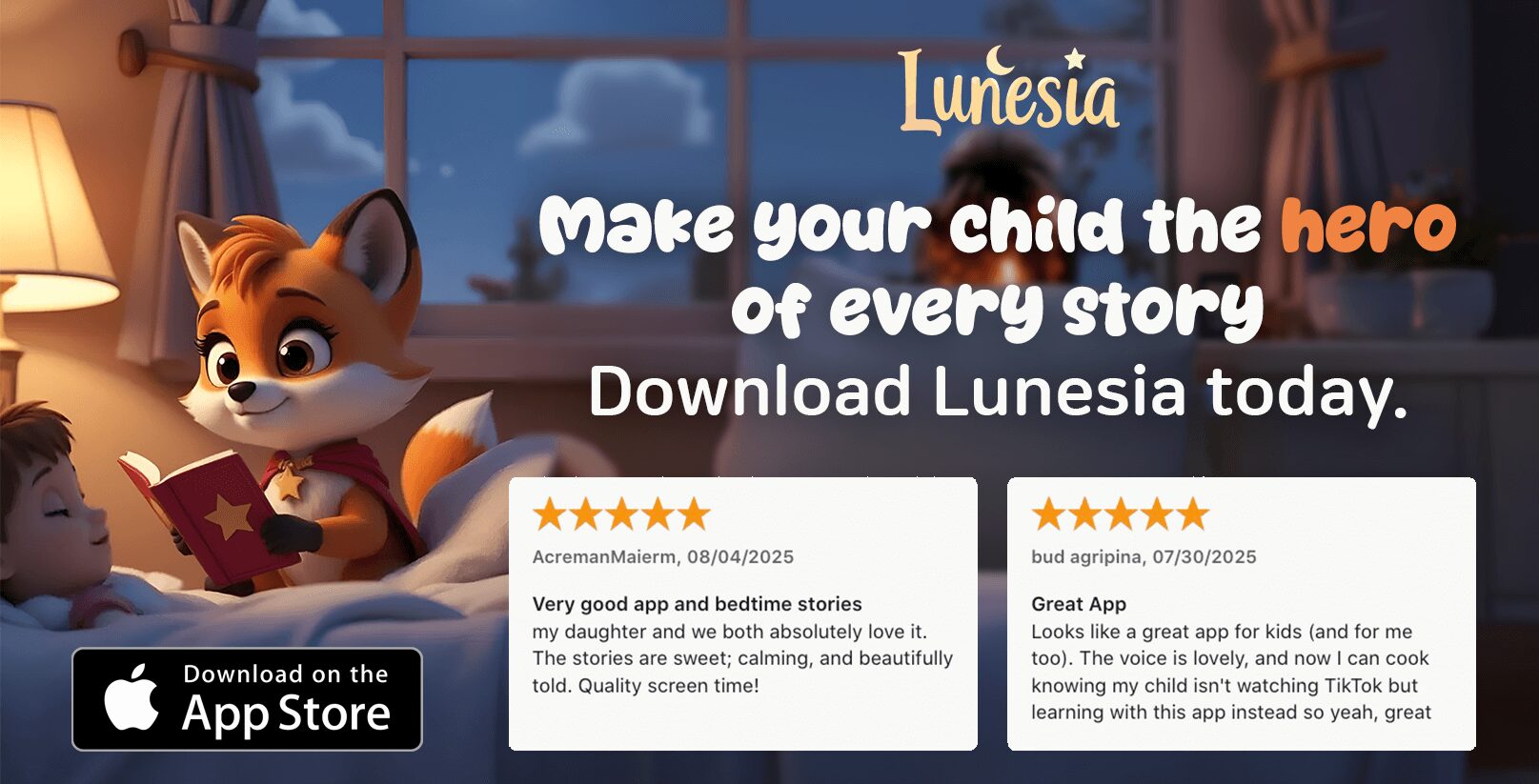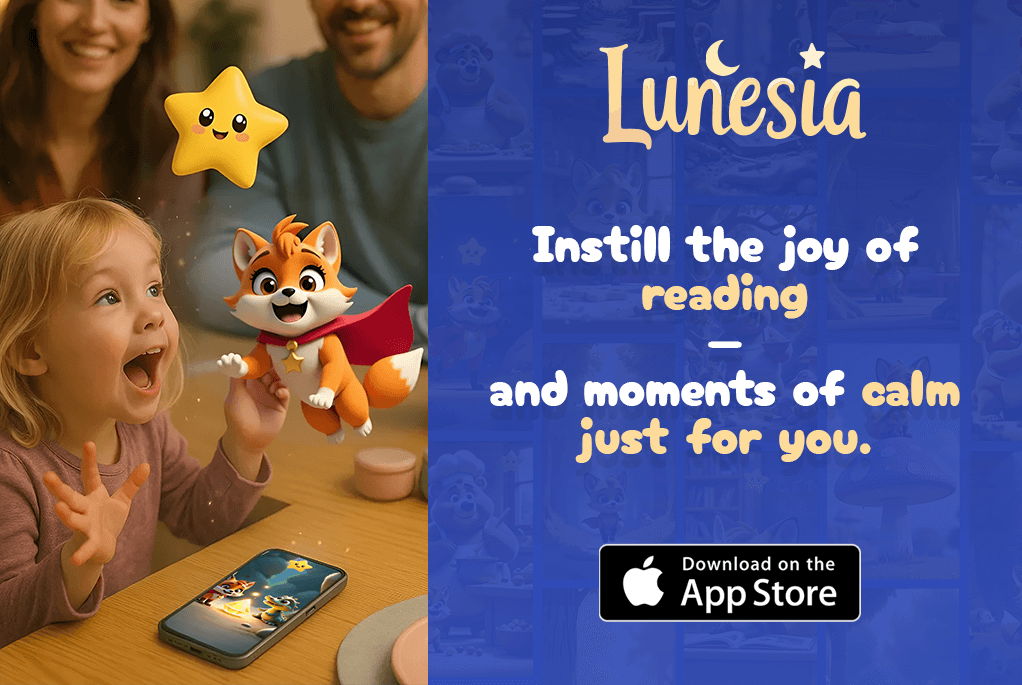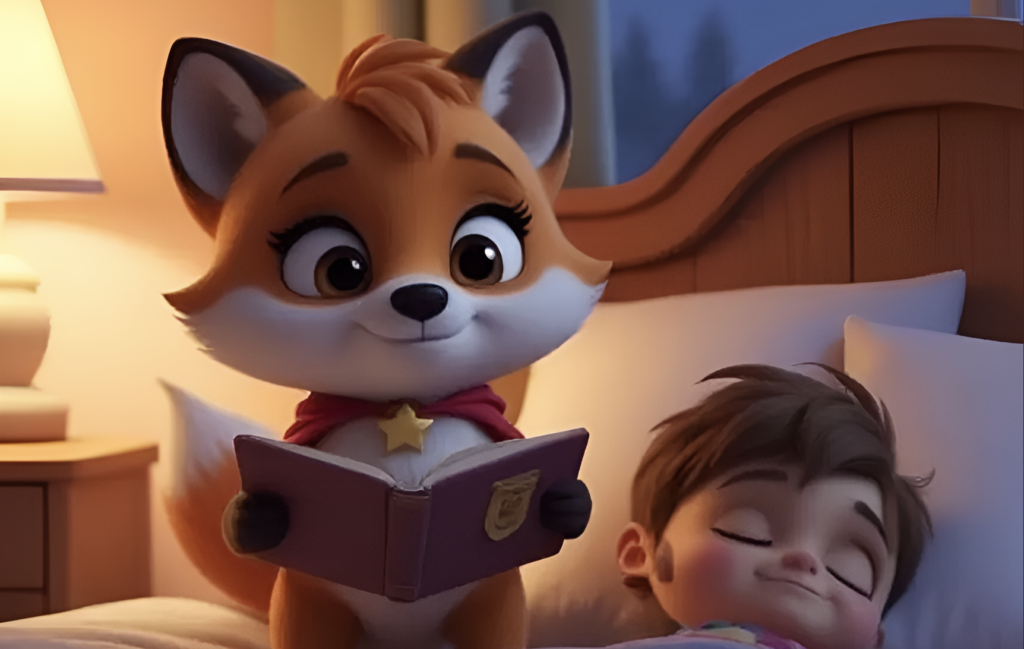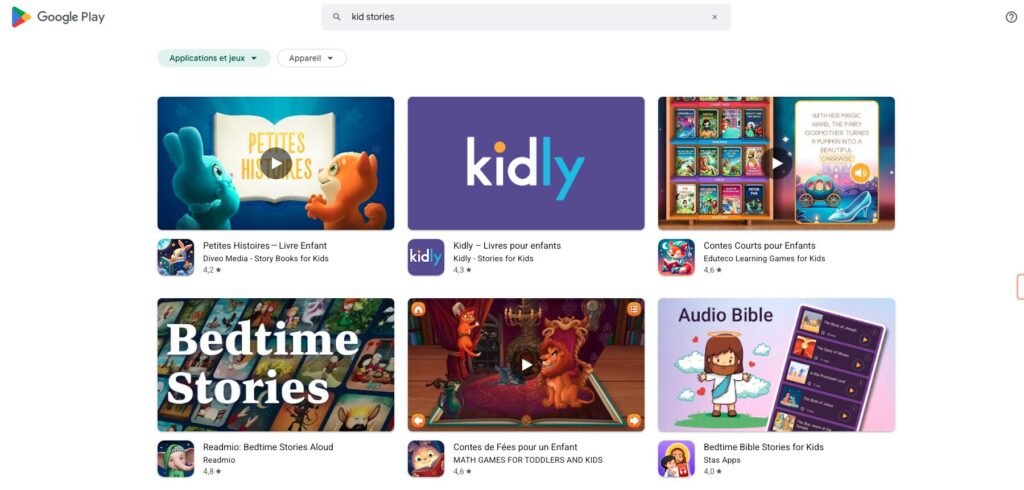Have you ever watched your child stare intently at a bug and wondered what incredible thoughts are bubbling up in their busy little mind? What if I told you the secret to unlocking their inner genius isn't about fancy flashcards or rigid lessons? It’s about turning the messy, everyday moments—a spilled cup of juice, a squabble over a toy, a sudden fear of the dark—into powerful brain-building adventures. It all starts when we swap out giving instant answers for asking one simple, magical question: "What do you think we should do?"
Raising a Thinker, Not Just a Follower
Let's be real for a moment, over a cup of coffee. You're not just raising a child; you're shaping a future innovator, a compassionate leader, and a resilient human who can face challenges with confidence. But how on earth do you do that between the toddler tantrums and the never-ending chorus of "why?" The amazing news is, you already have everything you need. It's about a simple, powerful shift: from being the source of all answers to being the guide on their incredible journey of discovery.
This process isn't as daunting as it sounds. You can think of it as a three-step dance.
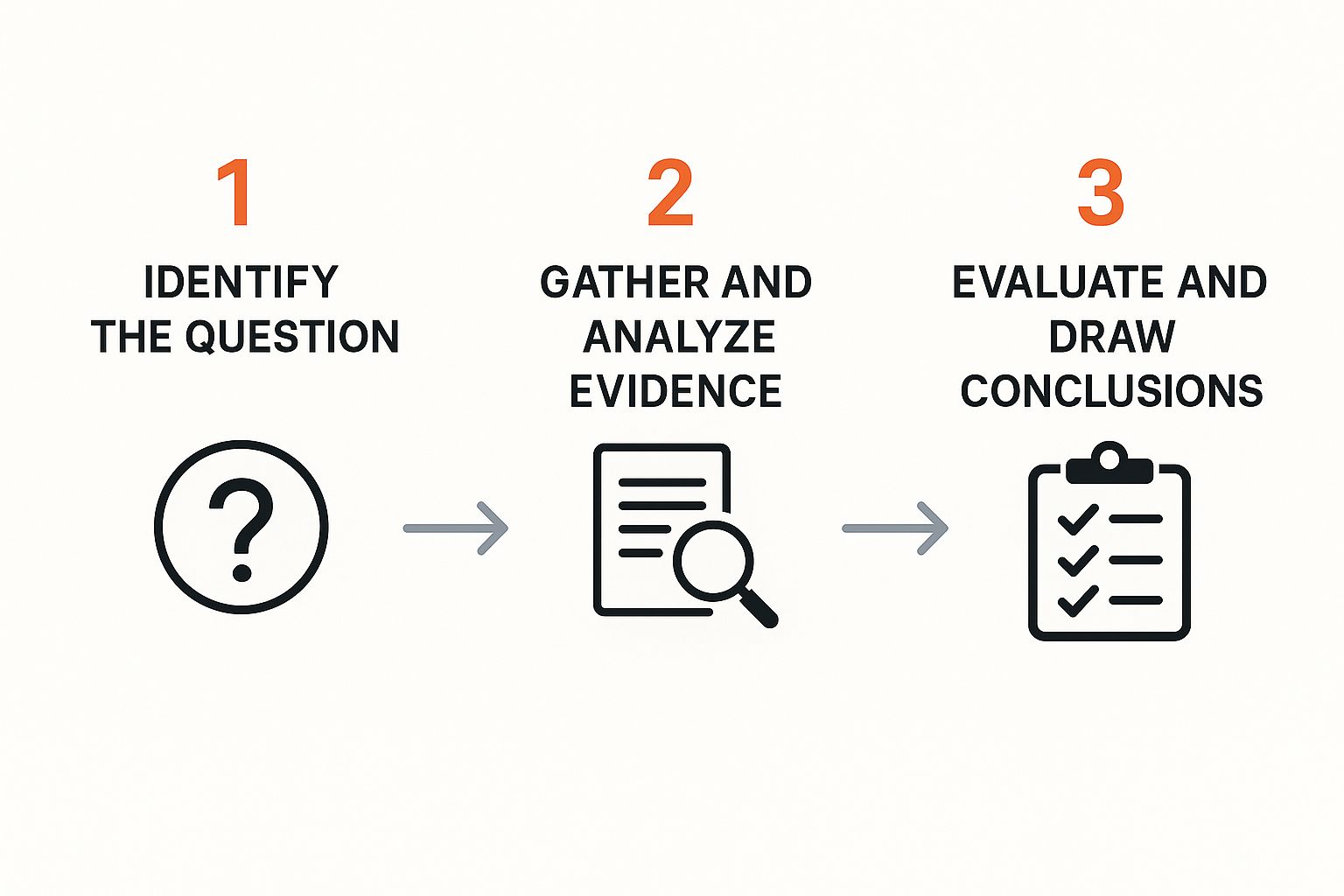
This visual helps show that critical thinking isn’t a single skill. It’s a journey—from spotting a puzzle, to exploring all the different pieces, and finally, feeling that amazing "aha!" moment when they figure out how it all fits together.
Turn Everyday Problems into Brain-Building Adventures
Imagine this: it’s bedtime, and your four-year-old is suddenly terrified of the shadows on their wall. Our first instinct might be to say, "Don't worry, there's nothing to be scared of." But what if, instead, you sparked their problem-solving brain?
You could try asking, "Wow, those shadows look like spooky monsters, don't they? I wonder… what could we do to make them our friends?" This single question can transform a moment of fear into a game. Maybe you make shadow puppets, giving them control over the "monsters." Or perhaps you go on a "shadow hunt" with a flashlight to discover what’s making them.
That’s critical thinking in action. You haven’t dismissed their fear; you've empowered them to investigate it, understand it, and conquer it. In fact, research shows this kind of guided problem-solving is directly tied to better emotional regulation. When kids analyze a situation, they feel more in control, which is a game-changer for handling those big, overwhelming feelings that lead to tantrums.
The goal isn’t to raise a child who never gets scared. It’s to raise one who, when faced with fear, thinks, “I am brave enough to figure this out.”
These moments are everywhere. A tower of blocks that keeps toppling over? That's a lesson in physics. Two kids wanting the same red truck? That's a negotiation masterclass waiting to happen.
From Daily Problems to Thinking Opportunities
| Everyday Situation | A Question to Spark Thinking |
|---|---|
| A tumble on the playground | "That looked like a surprise! What do you think made you trip?" |
| A ripped drawing | "Oh no! How could we turn this rip into part of a new picture?" |
| Two kids, one toy | "It looks like you both really want the red truck. How can we make sure everyone gets a fair turn?" |
| Spilled milk on the floor | "Oops, a flood! What's our first step to make it all go away?" |
| Can't reach a toy on a shelf | "That toy is pretty high up. What could we safely use to become a superhero and rescue it?" |
This simple shift helps them move from frustration to creative problem-solving, building a skill they'll use for the rest of their lives.
Guilt-Free Time for You, Meaningful Growth for Them
We all know you need a break. But the guilt that comes with plopping them in front of a screen can be heavy. What if their screen time could be the very thing that builds these skills, giving you a moment of peace and them a developmental boost?
This is where an app like Lunesia changes the game. It’s not passive entertainment; it’s a world of interactive adventures where your child’s decisions shape the story.
When a character in a Lunesia story faces a challenge—like deciding whether to be brave and enter a dark forest or show kindness to a grumpy troll—your child is the one calling the shots. They practice empathy, courage, and problem-solving in a safe, engaging, and completely ad-free world. While they're immersed in a value-rich journey, you get that precious, well-deserved time for yourself, knowing they are not just occupied, but actually becoming a kinder, braver, and smarter human.
The Art of Asking Powerful Questions
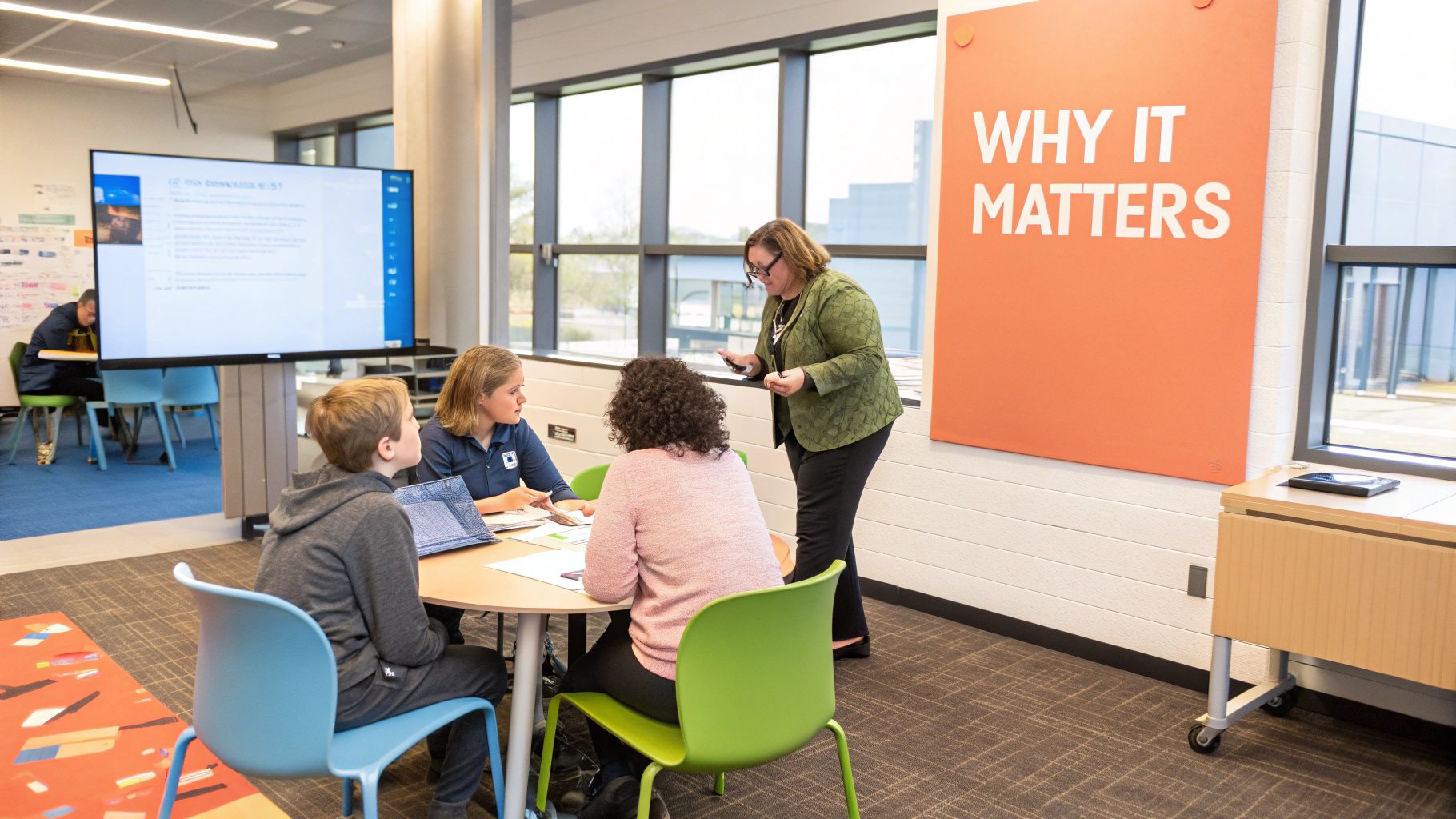
Does the endless "why" phase feel like a test of your sanity? I've been there. But what if we saw it not as an annoyance, but as a golden invitation? When our kids pepper us with questions, they're signaling they’re ready to think more deeply. The real magic, though, happens when we learn to ask powerful questions back.
We naturally ask questions like, "What color is that?" or "What sound does a cow make?" These are great for vocabulary, but they only have one right answer. To truly nurture a critical thinker, we need to ask questions that have many possible answers.
It's about shifting from "what is it?" to "what could it be?" This is the difference between a pop quiz and a real investigation.
Moving Beyond "What" to "What If"
Think about the next time you're building with blocks. Instead of just identifying shapes, what if you asked, "What do you think would happen if we put this tiny block on the bottom and the giant one on top?"
Suddenly, you’re not just stacking—you're a pair of engineers experimenting with physics. You've cracked open the door for them to predict, test, and analyze the results. That hands-on experience is infinitely more memorable than you simply explaining gravity.
Here are a few simple swaps you can make today:
-
Instead of: "Where does this puzzle piece go?"
-
Try: "How could we figure out where this piece goes? What clues do you see on its edges?"
-
Instead of: "Put your coat on."
-
Try: "It looks a little chilly outside. What do you think we should wear to stay warm and cozy on our adventure?"
These aren't just questions; they're launchpads for thinking. You’re sending a powerful message: your thoughts, ideas, and strategies matter. You're building a problem-solver from the ground up.
Turning Storytime into a Thinking Playground
So, how can we give our kids a safe space to practice making these bigger, more complex decisions? This is where a new kind of storytime comes in—one that goes way beyond just listening.
Imagine a story where the hero reaches a fork in the road. One path leads to a spooky forest, the other to a sunny meadow. What if your child got to decide which path the hero takes?
This is exactly how interactive stories, like the ones you'll find in the Lunesia app, are built. They are powered by questions. Children don't just hear about a character's journey; they actively shape it.
When a child makes a choice in a story—like whether to share their last piece of bread with a hungry fox—they are doing more than tapping a screen. They are engaging in a low-stakes rehearsal for real-life moral and logical dilemmas.
These value-rich adventures become a safe training ground for making thoughtful decisions. Kids see the direct results of their choices, learning about cause and effect through interactive stories in a way that truly sticks. It’s a powerful, playful way to build their moral compass.
Navigating Big Feelings with Critical Thinking

We’ve all been there. Your child is crumpled on the floor in a puddle of tears over a ripped drawing. To a 3-year-old, this isn't a minor setback; it's a world-ending crisis. Our instinct is to fix it fast: "It's okay, stop crying!"
But what if there's a better way? What if we could use these emotional storms as opportunities to build resilience? It turns out that the same critical thinking skills we use for a block tower can be applied to sorting through big, messy feelings. This shift transforms you from a "fixer" into an "emotional coach."
The Emotional Detective Strategy
When a tantrum erupts, it’s like a fire alarm blaring. Our first instinct is just to make the noise stop. But if we treat it like a puzzle instead of a disaster, we can guide our kids through it. I like to call this the emotional detective strategy.
-
Identify and Name the Feeling: Get down on their level. "I see your face is all scrunched up, and you're making loud sounds. It looks like you're feeling really angry that your drawing ripped." Naming the emotion helps bring order to their inner chaos.
-
Validate, Don't Dismiss: This is crucial. Acknowledge their reality. "It's so frustrating when that happens, isn't it? You worked so hard on that drawing. I would be upset too." This sends a powerful message: Your feelings are real, they are safe with me, and I’m right here.
-
Brainstorm a Solution Together: Once they feel heard, their logical brain can start to peek out. Now, you can pivot to problem-solving. "I wonder… what could we do now? Could we get some tape and be surgeons to fix it? Or maybe the rip could become a cool river in your picture?"
This does more than just quiet a tantrum. It teaches kids that emotions aren't scary tidal waves. They're signals pointing to a problem—and problems are something we can solve.
Bridging Feelings and Thinking
Linking logic to a meltdown might seem odd, but they are deeply connected. A global survey from McGraw Hill revealed that 47% of educators cited student mental health struggles as a significant barrier to teaching critical thinking.
The data is clear: when a child is emotionally overwhelmed, their ability to think creatively plummets. By helping our kids manage their feelings, we are literally clearing a path for their minds to do their best work.
When we teach a child how to analyze their own emotions, we give them a compass for life. They learn that even when they feel lost, they have the tools to find their way back.
Practicing Resilience Through Stories
So, how do we give our kids a low-stakes way to practice these skills before a real-life meltdown? This is where the magic of storytelling comes in, but with an interactive twist.
Imagine a story where a brave little knight is afraid of the dark cave he must enter. What if your child could help him decide what to do next? This is the unique power of the interactive tales in the Lunesia app.
In these adventures, children aren't just listeners. They become active participants, helping characters navigate fears and disappointments. When they choose to help a character show courage or kindness, they are practicing emotional resilience in a safe, engaging world. You can explore more on how interactive narratives build critical thinking and emotional skills.
And here’s the bonus for you: while your child is immersed in a story that’s building their emotional toolkit, you get a moment. A guilt-free break, knowing their screen time is actively helping them become a more resilient, thoughtful, and empathetic person.
Creating a Home That Celebrates Curiosity
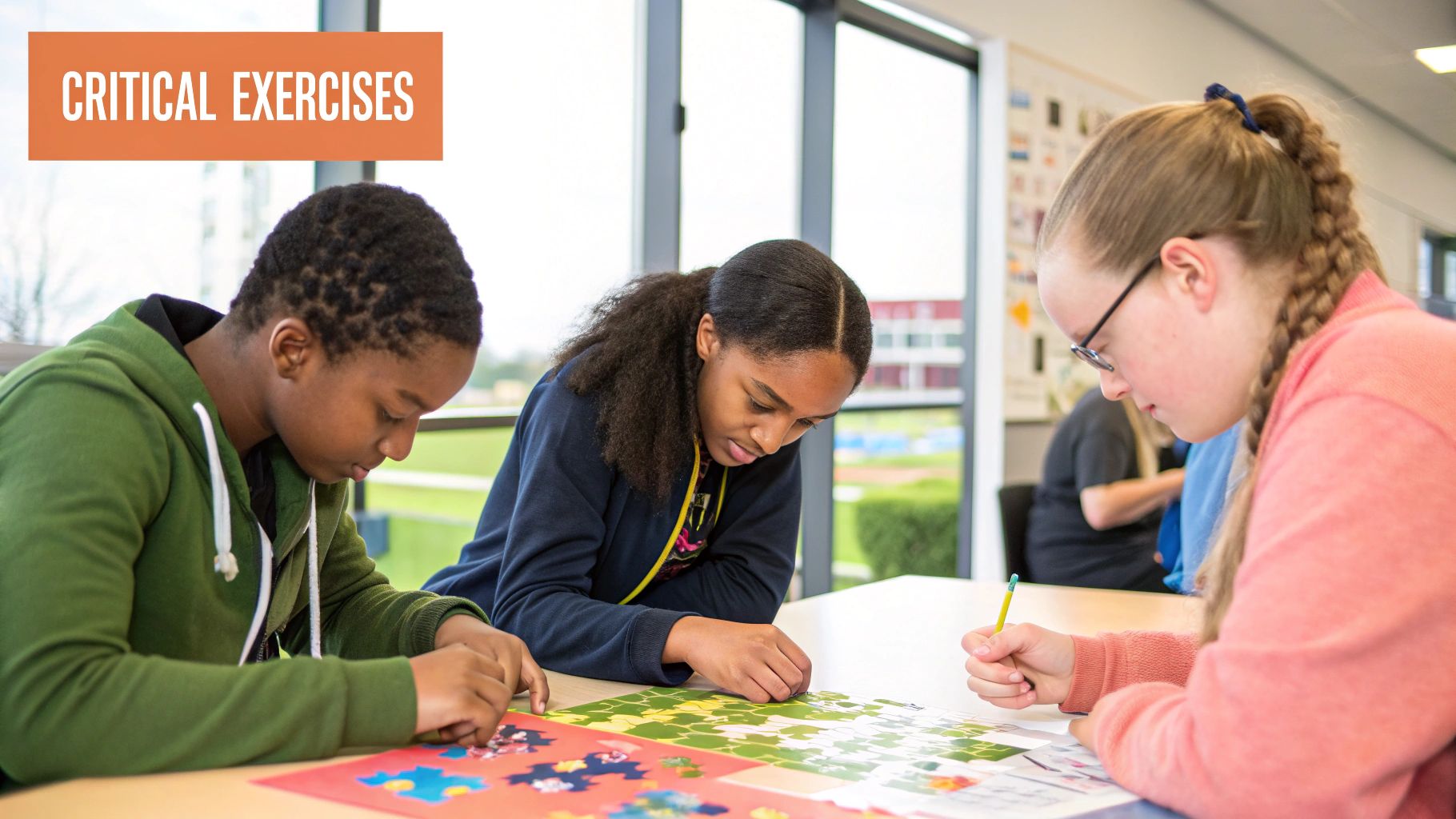
Think about your home for a second. Is it a place where answers are given, or where questions are celebrated? It’s so easy to fall into the trap of just trying to get through the day. But creating a family culture that values curiosity can be one of the most powerful things we do for our kids' growing minds.
We often get caught up in what feels like "real" learning—memorizing letters, counting to twenty. And while those things are important, rote learning teaches the what but not the why or the how.
The real magic isn't just knowing that three plus three equals six. It's in the moment they discover why their tower keeps falling and figure out a new way to make it stand tall. This is the difference between memorization and true understanding.
From Rote Learning to Rich Discovery
So, how do we nurture their inner detective? It starts by tweaking your environment. You don't need expensive educational toys; you just need to reframe the everyday stuff you already have.
One of the easiest ways to do this is to create a "tinkering station." Find a low drawer or a small basket and fill it with safe, open-ended household items.
- Empty cardboard tubes
- Clean plastic containers and lids
- Scraps of fabric or old ribbons
- Large, smooth stones (big enough not to be a choking hazard)
- A roll of painter’s tape
What happens when you give a four-year-old a cardboard tube and some tape? You're not just handing them objects; you're handing them problems to solve. This is where the crucial balance between interactive learning and free play becomes so obvious.
The "I Wonder…" Jar
Here's another super simple idea: start a family "I wonder…" jar. Grab an old jar and keep a notepad nearby. Whenever your child asks one of those amazing, out-of-the-blue questions—"I wonder why the moon follows our car?"—write it down and pop it in the jar.
This simple act does two incredible things:
- It validates their curiosity. It sends a clear message that their questions matter.
- It relieves the pressure on you. You don't have to have every answer! Instead, you can make a weekly ritual of pulling out a question to investigate together.
This philosophy—valuing the process of discovery over the pressure of getting the "right" answer—is the very heart of how we teach critical thinking. It shifts learning from a chore into a joyful adventure.
Weaving Curiosity into Screen Time
Let’s be real, screen time is a part of modern family life. But what if it could perfectly align with this culture of curiosity? This is where an app like Lunesia can be your secret weapon.
Lunesia’s interactive stories are built on "what if?" and "what happens next?" Your child isn't just passively watching a story; they are stepping into the hero's shoes, making choices that shape the adventure.
When a character faces a challenge—like how to cross a wide river—your child gets to think through the options and decide. This transforms screen time into an engaging, ad-free journey of problem-solving and empathy. It’s the ultimate win-win. Your child is immersed in a meaningful activity that nurtures their curiosity and builds kindness and courage. Meanwhile, you get that much-needed moment for yourself, completely guilt-free.
How Imaginative Play Builds a Smarter Brain
What if I told you that one of the most powerful tools for building your child's brain is probably already their favorite activity? It’s not a fancy gadget or a structured lesson. It’s the wonderfully chaotic, magical world of play.
When you see your child building a lopsided fort from couch cushions or whispering secret plans to their stuffed bear, you're watching a high-level brain workout in progress. These seemingly simple games are actually complex exercises in what experts call executive function.
The Hidden Genius in Make-Believe
Have you ever watched your child meticulously plan a tea party for their dolls? They aren’t just pouring imaginary tea. They're planning an event, negotiating roles ("You be the guest, and I'll be the host!"), and thinking through cause and effect ("If I pour too much, the cup will overflow!").
This is critical thinking in its purest, most joyful form. Through these playful scenarios, kids learn to:
- Plan and Strategize: Building a block tower that doesn't fall over requires foresight and a gut-level understanding of physics.
- Negotiate and Collaborate: Deciding the "rules" of a make-believe game is a masterclass in social problem-solving.
- Adapt and Pivot: When the "lava" on the floor suddenly has a safe spot, they have to adjust their plan and create a new solution on the fly.
Imaginative play gives them a safe lab to test theories, make mistakes, and try again without real-world consequences.
Why Structured Play Is a Game-Changer
While free play is essential, what if you could guide that imaginative energy into a focused, skill-building adventure? This is where "structured imaginative play" comes in, and for busy families, it’s a total game-changer.
This is precisely the philosophy behind the Lunesia app. It channels the power of make-believe into interactive stories where your child is the hero.
Instead of just passively listening, your child makes choices that shape the entire adventure. These aren't random taps; they are critical decisions with real, visible consequences within the story's world.
Deciding whether to share a magical apple with a grumpy gnome builds the exact same mental muscles as physical play. Each choice reinforces values like kindness and courage in a way that truly sticks—all within a completely safe, ad-free digital space.
Building a Foundation for Lifelong Learning
The skills children practice on the playground aren't just for the playground. The ability to analyze problems and make thoughtful decisions is the foundation for their entire academic and social future.
In fact, the importance of these skills is so recognized that a major international research initiative is now underway to measure how critical thinking develops through education. This shows a worldwide shift toward valuing deep, analytical thinking from a very young age. You can find out more about how experts are measuring critical thinking development globally.
The Ultimate Win-Win for Modern Parents
Now for the part that speaks directly to you—the parent juggling a million things. We desperately need a moment to breathe. The guilt that comes with handing over a screen can be immense.
But what if that screen time was actively making your child a better thinker, a kinder person, and a more resilient problem-solver?
This is the beautiful balance Lunesia offers. While your child is deeply immersed in an exciting, value-rich journey—learning to navigate challenges and practice empathy—you get that precious, well-deserved time back for yourself. You can finally finish that hot coffee, answer an email, or just sit in silence for five minutes, completely guilt-free. You’re not just distracting them; you’re giving them an enriching experience that fuels their brain development.
Answering Your Top Questions
As you start this incredible journey of raising a little thinker, it’s completely normal for a few questions to pop up. Let's tackle some of the most common ones I hear from parents just like you. The answers are simpler—and more reassuring—than you might think.
At What Age Can I Start Teaching These Skills?
I get this one all the time: “Is my two-year-old too young for this?” The beautiful truth is, you can start right now—because your child has already started on their own. Critical thinking isn’t about formal lessons; it’s about nurturing the natural curiosity they’re born with.
Think about it. When your toddler drops their spoon from the high chair for the tenth time, they aren't just testing your patience. They're a tiny scientist running an experiment on gravity. That’s cause and effect in its purest form.
- For a 2-year-old: Lean into this by asking simple, predictive questions. "What do you think will happen if we put the wobbly block on top?"
- For a 6-year-old: The questions can become more complex. If they're struggling to build a bridge, you might ask, "How can we solve this together? What could we use to make the bridge stronger?"
The key is to meet them where they are, turning their natural play into powerful learning.
What if My Child Gets Frustrated and Gives Up?
This is a scene we all know: the puzzle piece won't fit, the tower keeps tumbling, and a meltdown is on the horizon. Your child isn't being difficult; they’re hitting a wall of frustration. Believe it or not, this is one of the most important opportunities you have.
Instead of swooping in with the answer, try becoming their "thinking partner."
- Validate Their Feelings: "Wow, this is really tricky, isn't it? I can see you're feeling frustrated."
- Express Your Confidence: "This is tough, but you are a great problem-solver. I bet you can figure this out."
- Offer Partnership, Not Answers: "Can I be your thinking partner? Let's look at the shape of that empty space together."
This teaches them that frustration is just a temporary stop on the way to a solution, not a dead end.
Is All Screen Time Bad for Critical Thinking?
This is the big one, isn't it? The question that carries so much parental guilt. Let me be clear: the answer is a resounding no. What truly matters is the type of screen time. Is it passive consumption or active participation?
There’s a world of difference between zoning out to a random video and engaging with an interactive experience. This is where a tool like Lunesia becomes so valuable.
Lunesia is designed to be the gold standard for active screen time. It’s a rich, interactive environment where children don't just watch a story—they make the decisions that shape the adventure.
Imagine your child helping a character decide whether to be brave or kind. They aren’t just being entertained; they’re practicing empathy and problem-solving. It all happens in a completely safe, ad-free space built to develop skills, not just to distract.
This is how you get that precious, much-needed break for yourself without a shred of guilt. You can finally relax, knowing your child is safe, happy, and on a meaningful adventure that’s genuinely making them a smarter, kinder human.
Ready to transform screen time from a source of guilt into a tool for growth? With Lunesia, your child steps into a world of interactive stories where their choices matter. They'll build courage, kindness, and problem-solving skills, all while you get a well-deserved break. Start your family’s adventure today at lunesia.app and watch your little thinker blossom.
